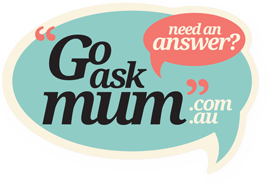Dad’s Dictionary for the Delivery Room
For almost nine months, you’ve been watching your partner sit engrossed in yet another pregnancy book. You’ve listened as she has compared your growing child to almost every fruit and vegetable imaginable, smiled as she describes in exceptional details the new skills your baby has mastered each week and you’ve nodded as she’s discussed her birth plan. While you can’t wait to meet your long awaited baby, you have to admit you are a bit behind on all the medical jargon your wife seems to know all about.
There’s no need to panic that you haven’t hit the books too! We’ve put together a delivery room dictionary of terms you are likely to hear mentioned in delivery rooms and the days after the birth of your bundle of joy.
Amniotic Sac
This is the sac your baby has been growing in for the past nine months. Its filled with amniotic fluid, a substance which your little one has been swallowing and excreting.
The membranes of this sack may rupture when labour begins, or they can be broken by a Doctor or Midwife to help progress labour.
Anterior
Is a term which refers to the position of the baby in utero. When a baby is anterior, their spine is facing the front of their Mother’s pelvis.
APGAR
This is a test which is performed shortly after your baby’s birth to assess their health. Doctors will assess your baby against the following criteria:
Activity Level
Pulse
Grimace (response)
Appearance
Respiration
Each functions is given a score between 0 – 2, giving a total out of ten. The test may be repeated several times after your baby’s birth, usually at around five and eight minutes after delivery.
Birth Canal
This refers to your partner’s vagina, the space where the baby will travel after it moves through the cervix to greet the outside world.
Breech
In most cases, babies will present head down – ready to enter the world. However in a small percentage of pregnancies, baby will present breech, which means either their bottom or feet are facing the cervix, which may make delivery more difficult.
Cervix
Is the opening at the top of the uterus where the baby will move through before entering the birth canal.
Caesarean
A Caesarean is a surgery to deliver a baby through an incision made into their Mother’s abdomen. The majority of incisions are made through a transverse cut along the bikini line, however in some circumstances a vertical cut up the abdomen will be required.
Crowning
This is the moment before delivery, when the baby’s head appears at the entrance to the vagina.
Dilation
Dilation is the gradual opening of the cervix during labour. You will hear Doctors and midwives mentioning different measurements, as once the cervix is 10cm or fully dilated, it’s time for the baby to be delivered.
Episiotomy
Is a procedure which may be performed to enlarge the vaginal opening to assist with the delivery of your baby. An incision is made into the perineum, the area between the vagina and anus.
Forceps
Are instruments which resemble tongs and may be used to help deliver your baby.
Jaundice
This is common in newborn babies and is caused by an excess of bilirubin (produced by the liver) in baby’s blood. Signs of jaundice include a yellow tinge to the whites of your baby’s eyes and a yellowish skin tone. The condition is easily treated, often using special light therapy.
Meconium
Is the dark (almost black) sticky substance which makes up your baby’s first bowel movement. If meconium is passed prior to your baby’s birth, it can suggest they are in distress and intervention may be required.
Molding
In order for your baby to make their journey from the uterus to the outside world, their skull sutures may overlap (mold) to help them navigate the trip through their mother’s pelvis and along the birth canal. This can result in a temporary ‘cone’ shaped head. Rest assured it will return to normal.
Obstetrician & Pediatrician
An Obstetrician is a Doctor who specialises and practices in pregnancy and childbirth while a Pediatrician specialises in children and babies.
Placenta
The placenta is the vital structure which has been protecting and providing your baby with Oxygen and other essential nutrients for the duration of the pregnancy. Shortly after your baby’s birth, your partner will deliver the placenta.
Posterior
Is a term which refers to the position of the baby in utero. When a baby is posterior, their spine is facing the back of their Mother’s pelvis.
Presentation
Midwives and Doctors will talk about your baby’s presentation when they are discussing which part of the baby is first to enter the birth canal. In most case your baby will have a cephalic (head first) presentation, however some babies may be breech (either their feet or bottom presenting first) or shoulder first.
Transition
This is the phase of the labour process where contractions become very strong and sometimes unpredictable just before the Mother needs to begin to push.
Transverse
Another position your baby may sit in utero is transverse, where they are lying horizontally across the uterus.
Umbilical Cord
This is a lifeline between your baby and the placenta. The umbilical cord is made up of three vessels, two arteries and one vein and transports blood, oxygen and vital nutrition to your baby.
So there you have it, while we can’t prepare you for the overwhelming love you will feel for both your partner and baby once he or she arrives, we can prepare you on what you may hear in the delivery room.
Good Luck!
Disclaimer: The content on this website is not intended to be a substitute for professional medical advice, diagnosis, or treatment. Always seek the advice of your physician or other qualified health provider with any questions you may have regarding a medical condition. Never disregard professional medical advice or delay in seeking it because of something you have read on this Website.










